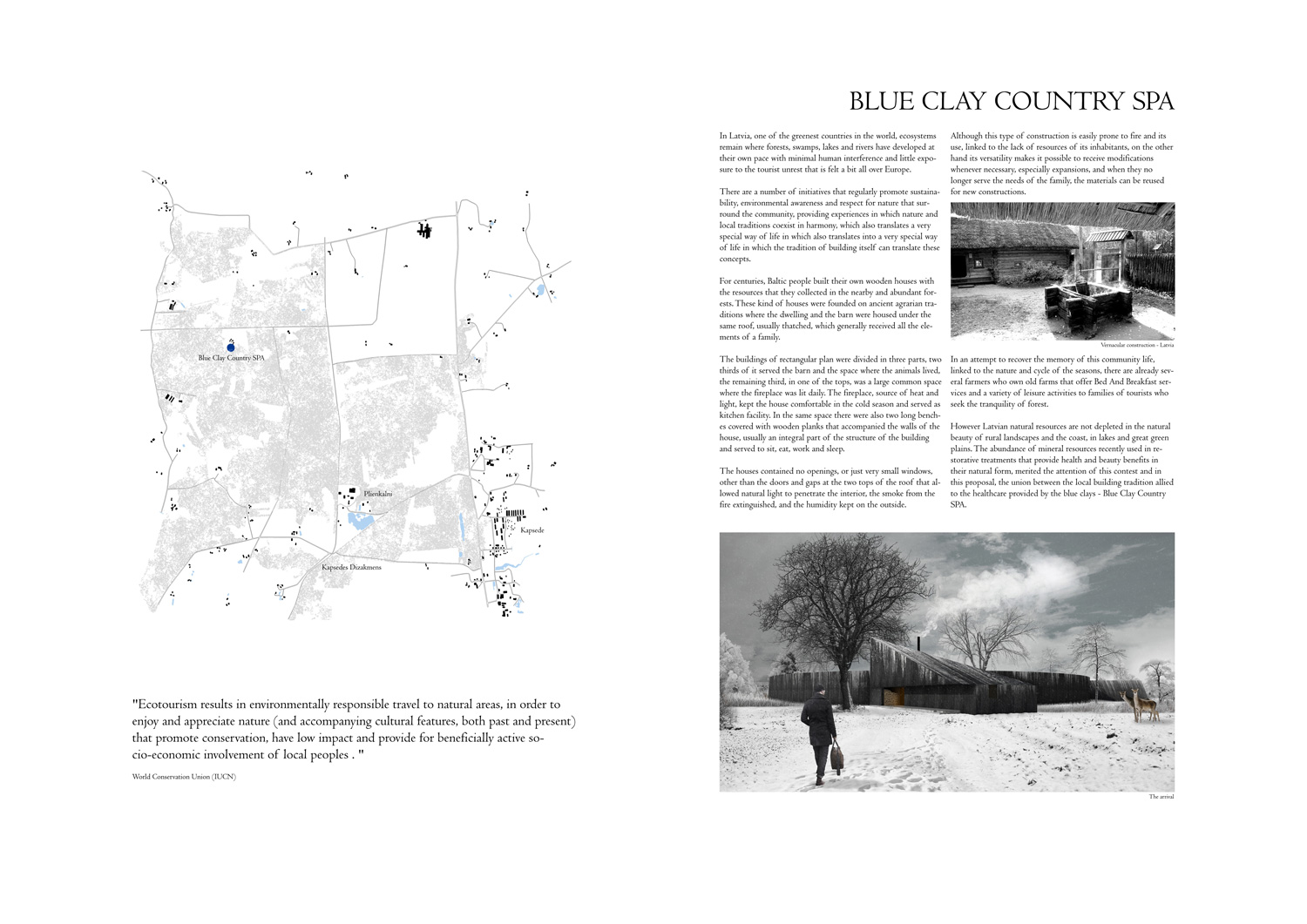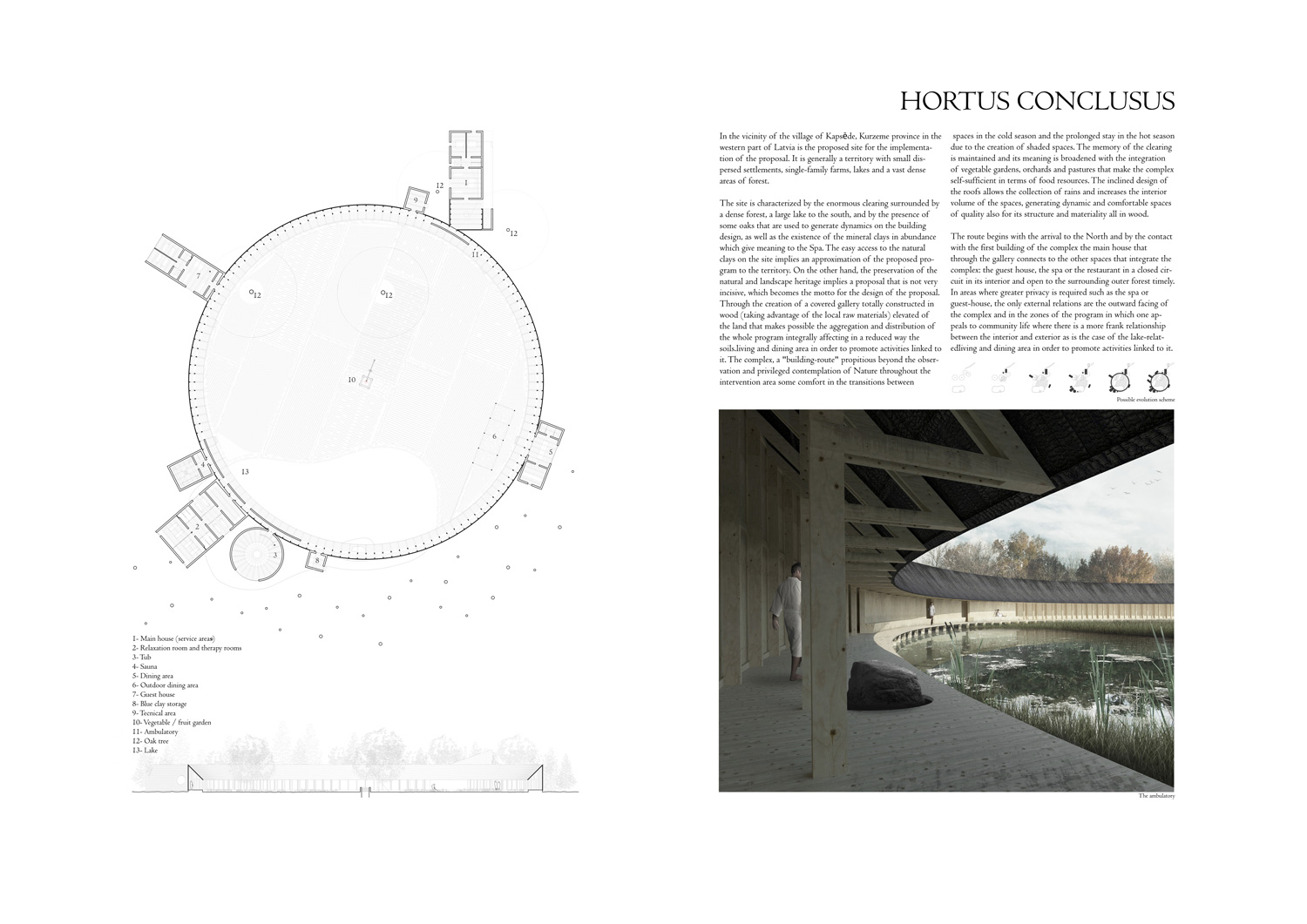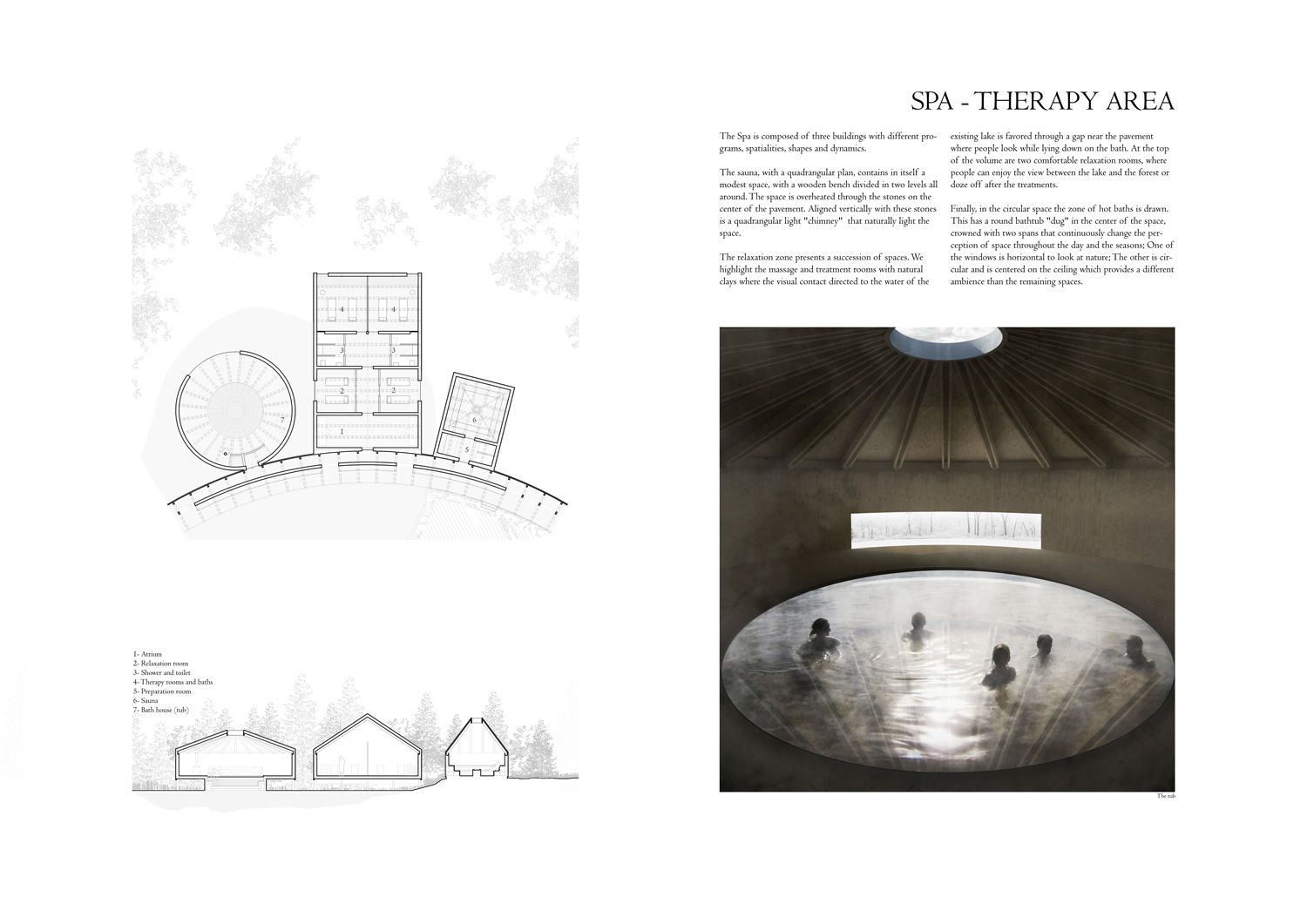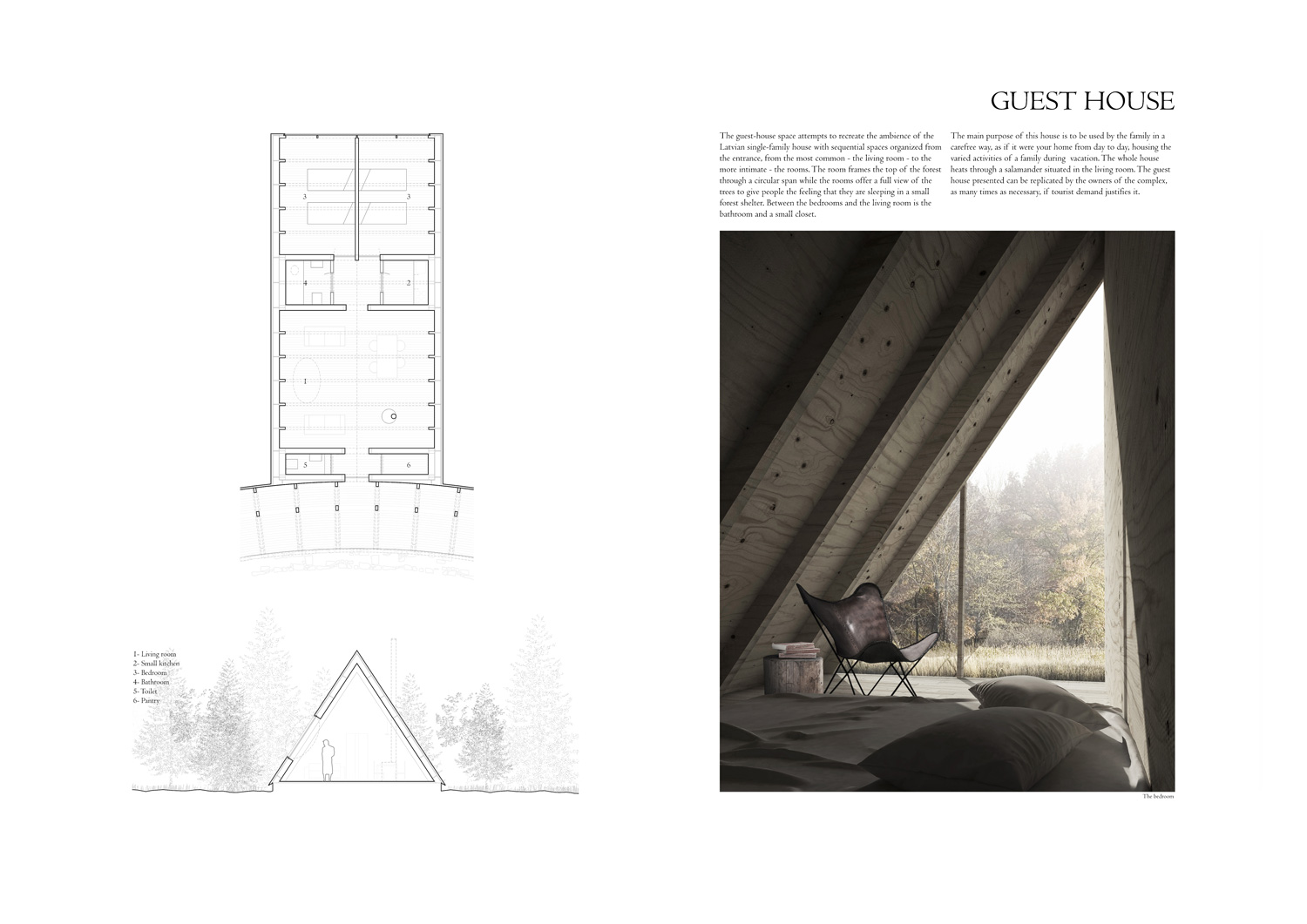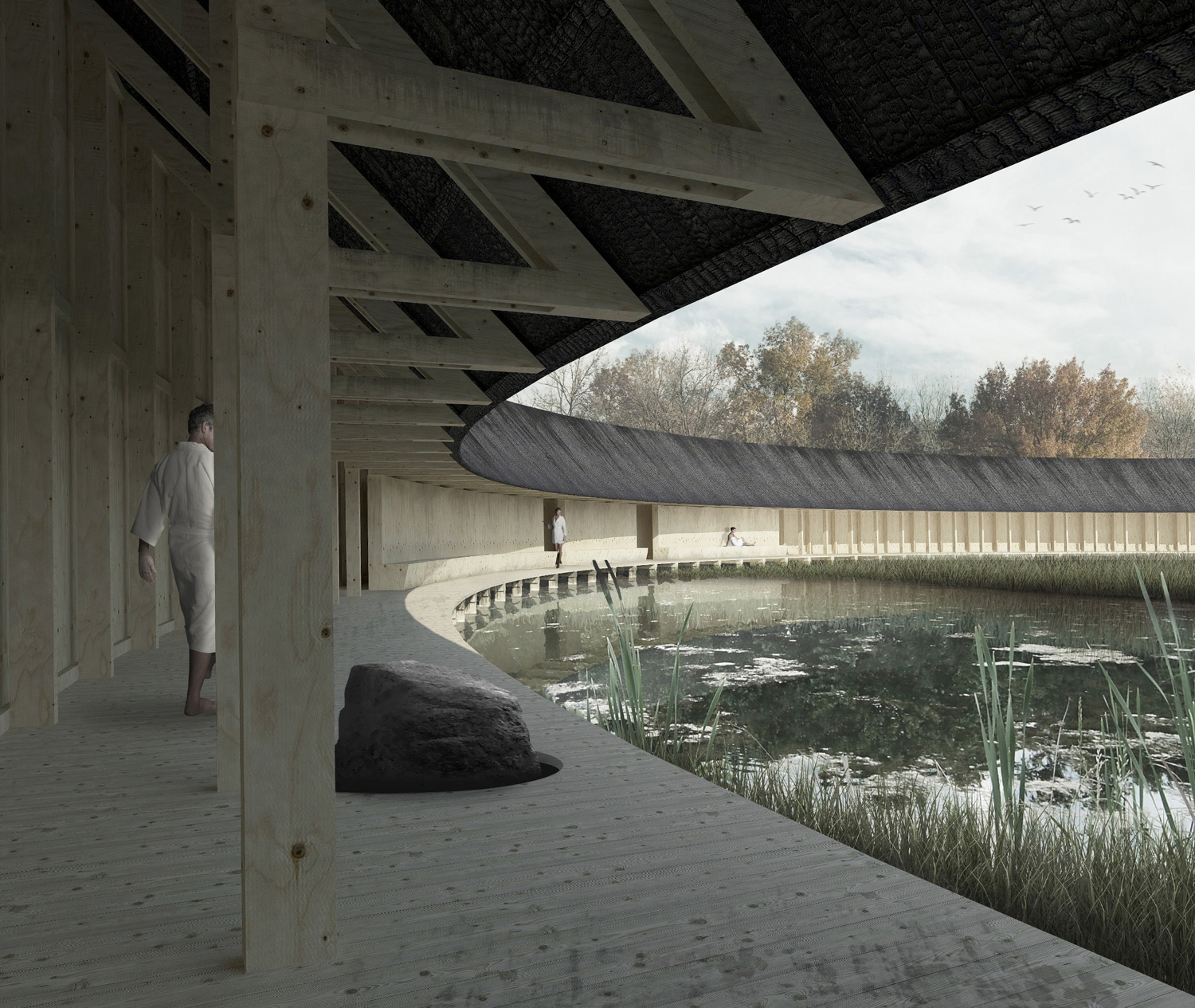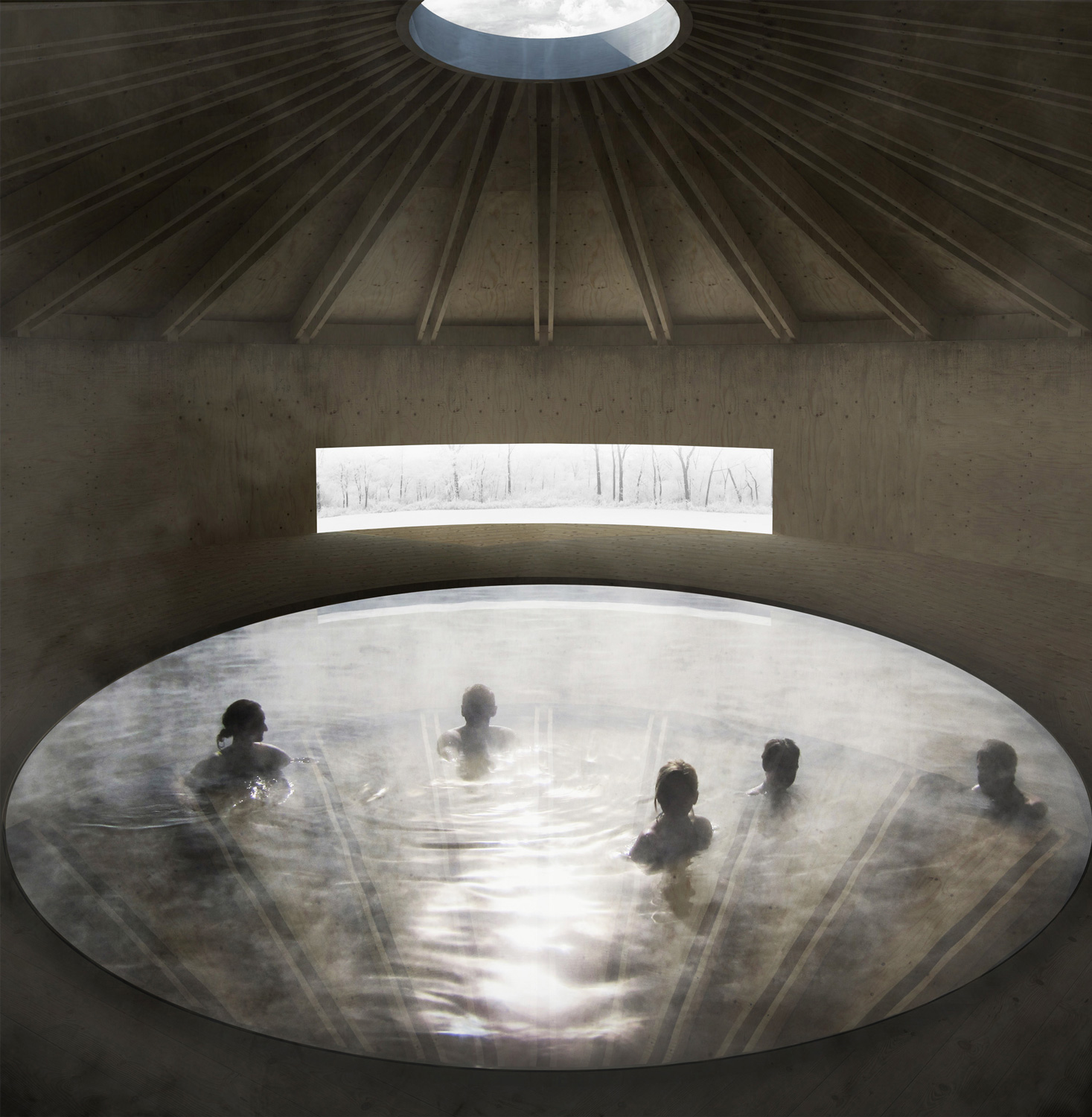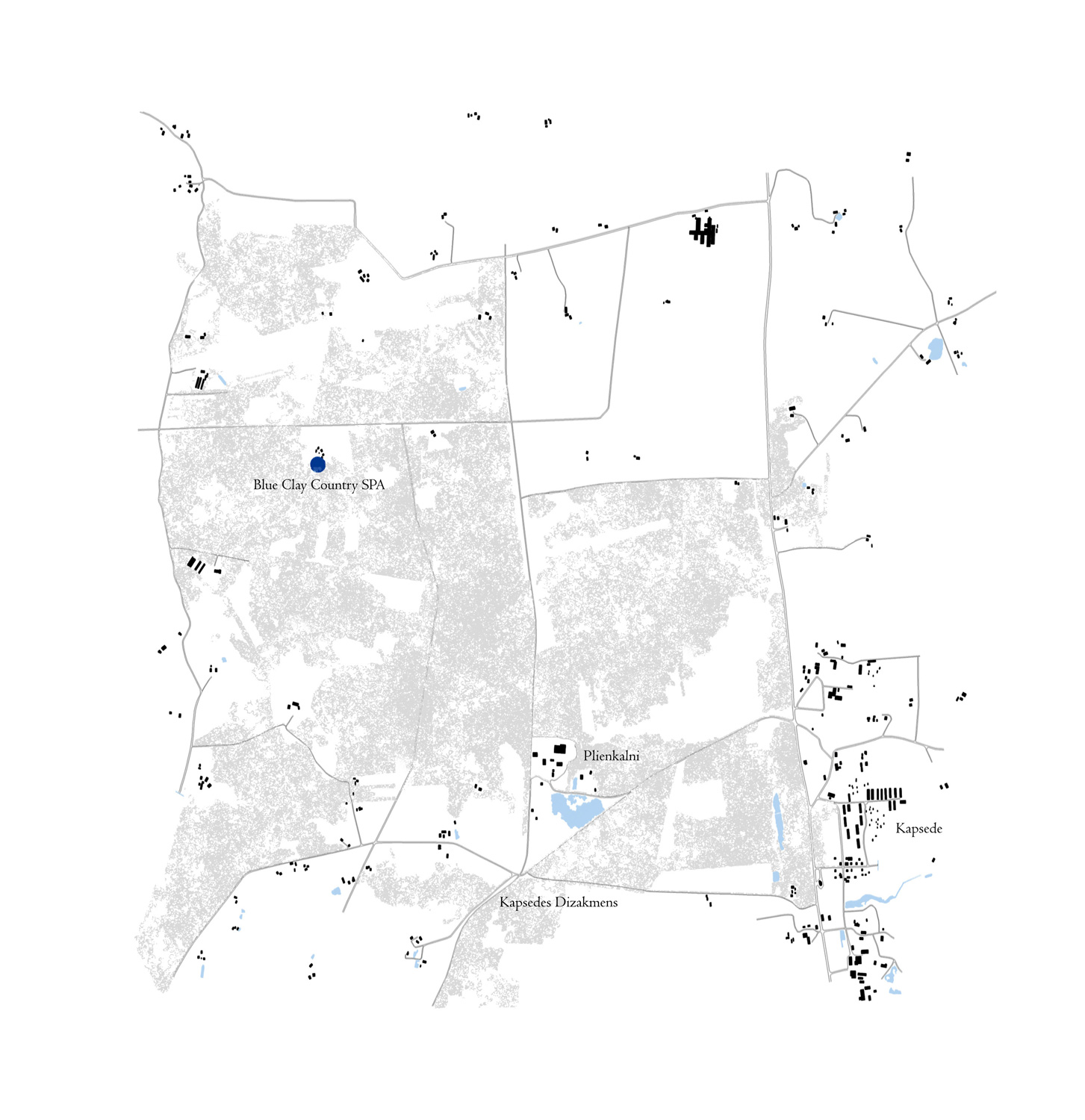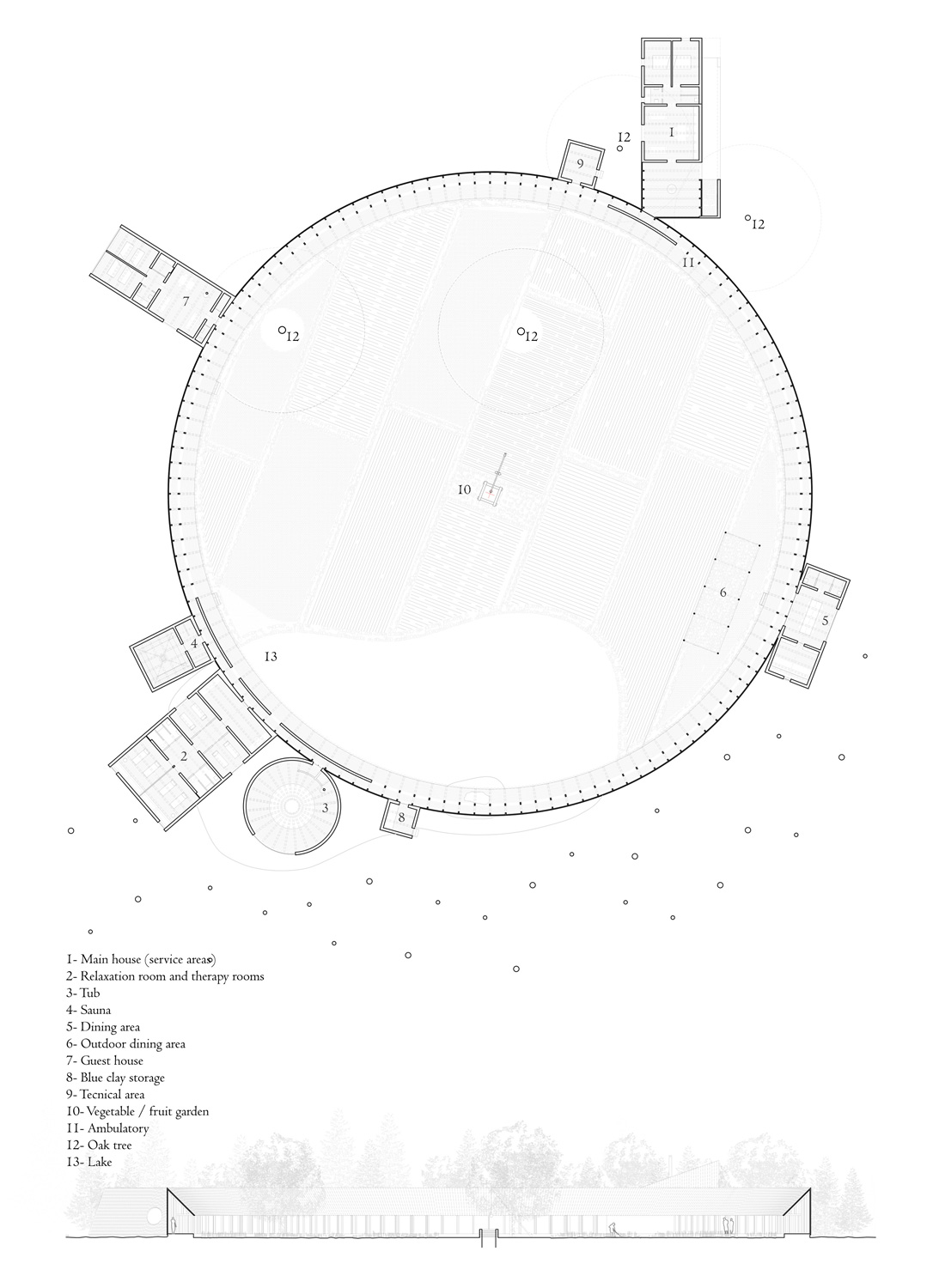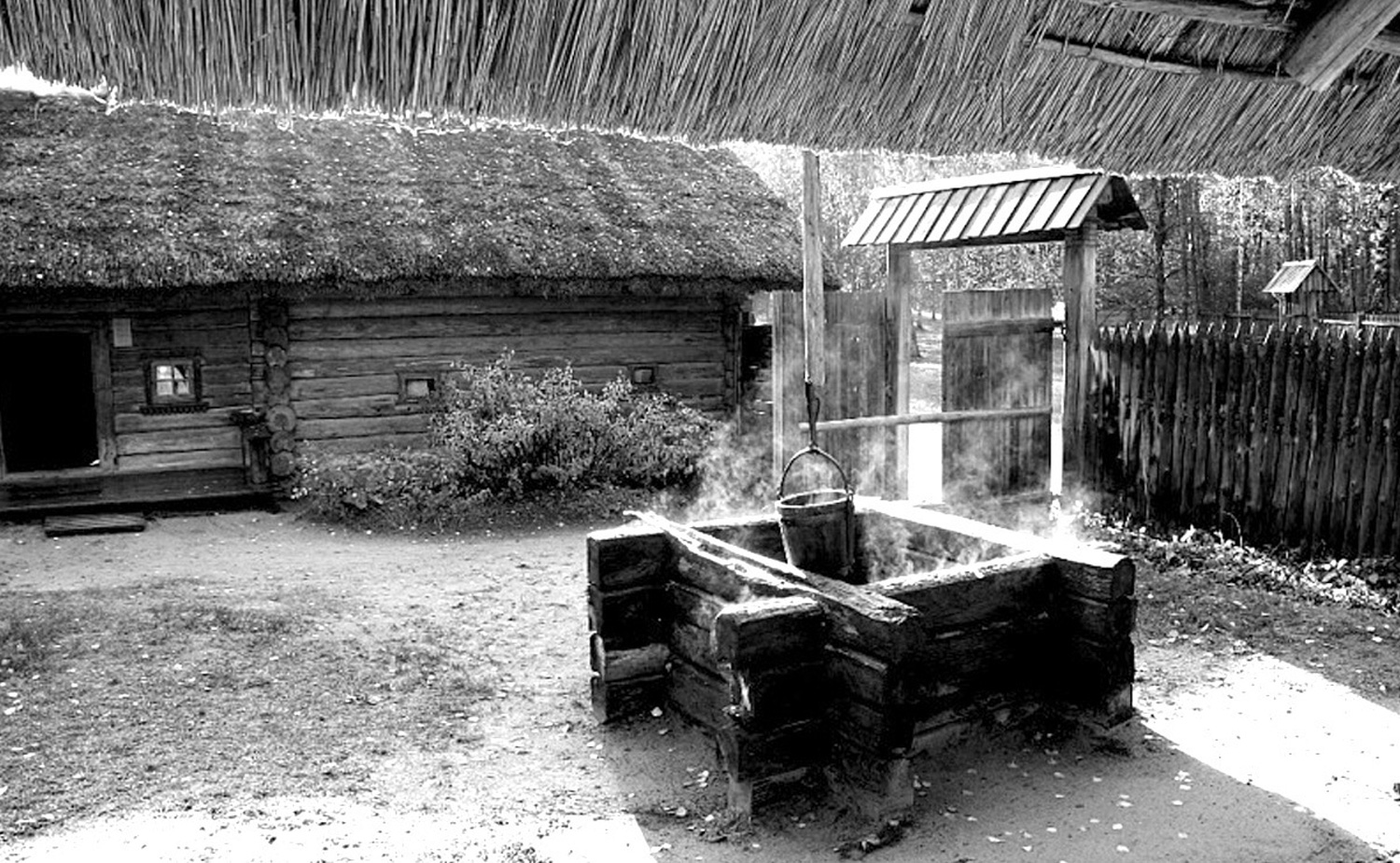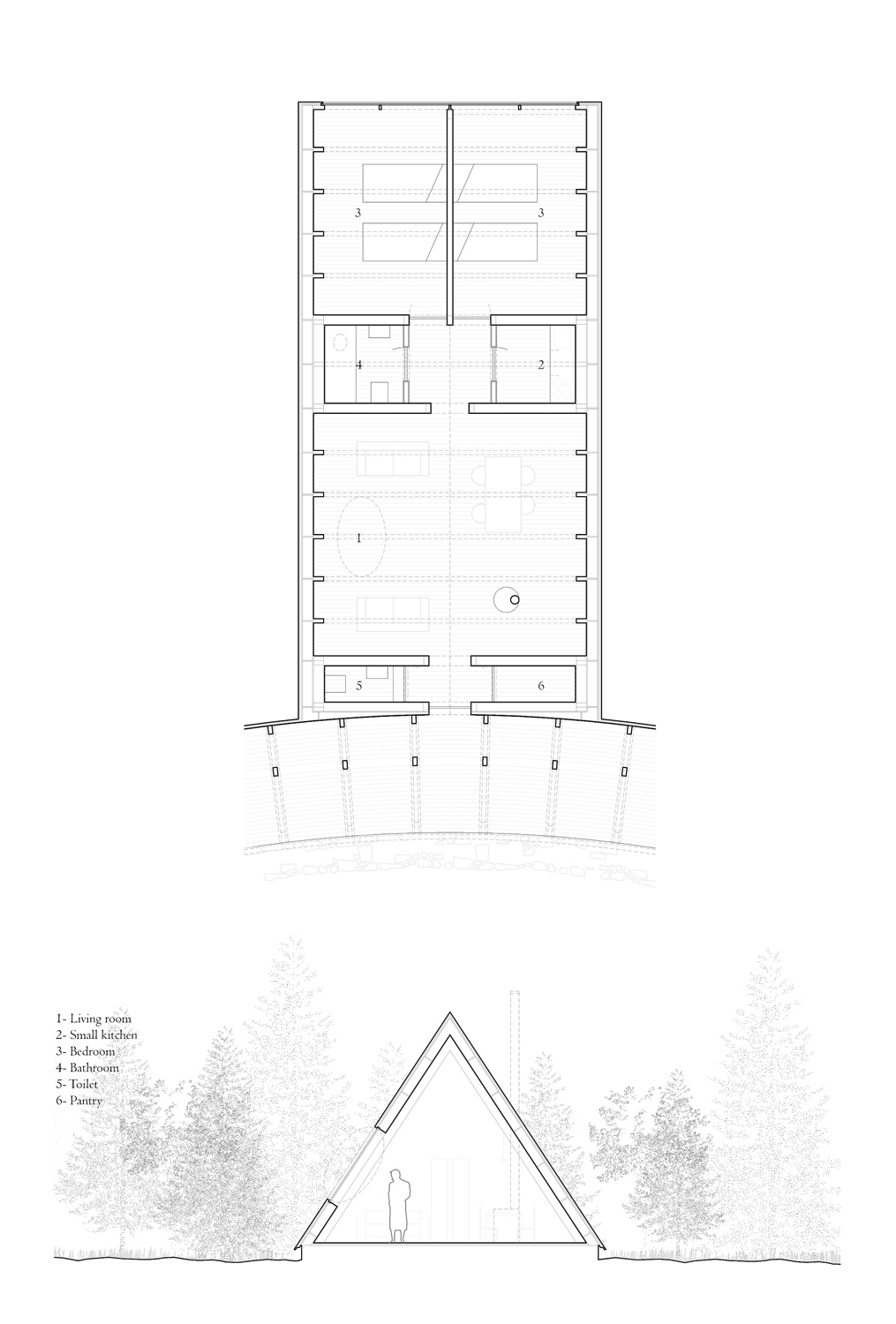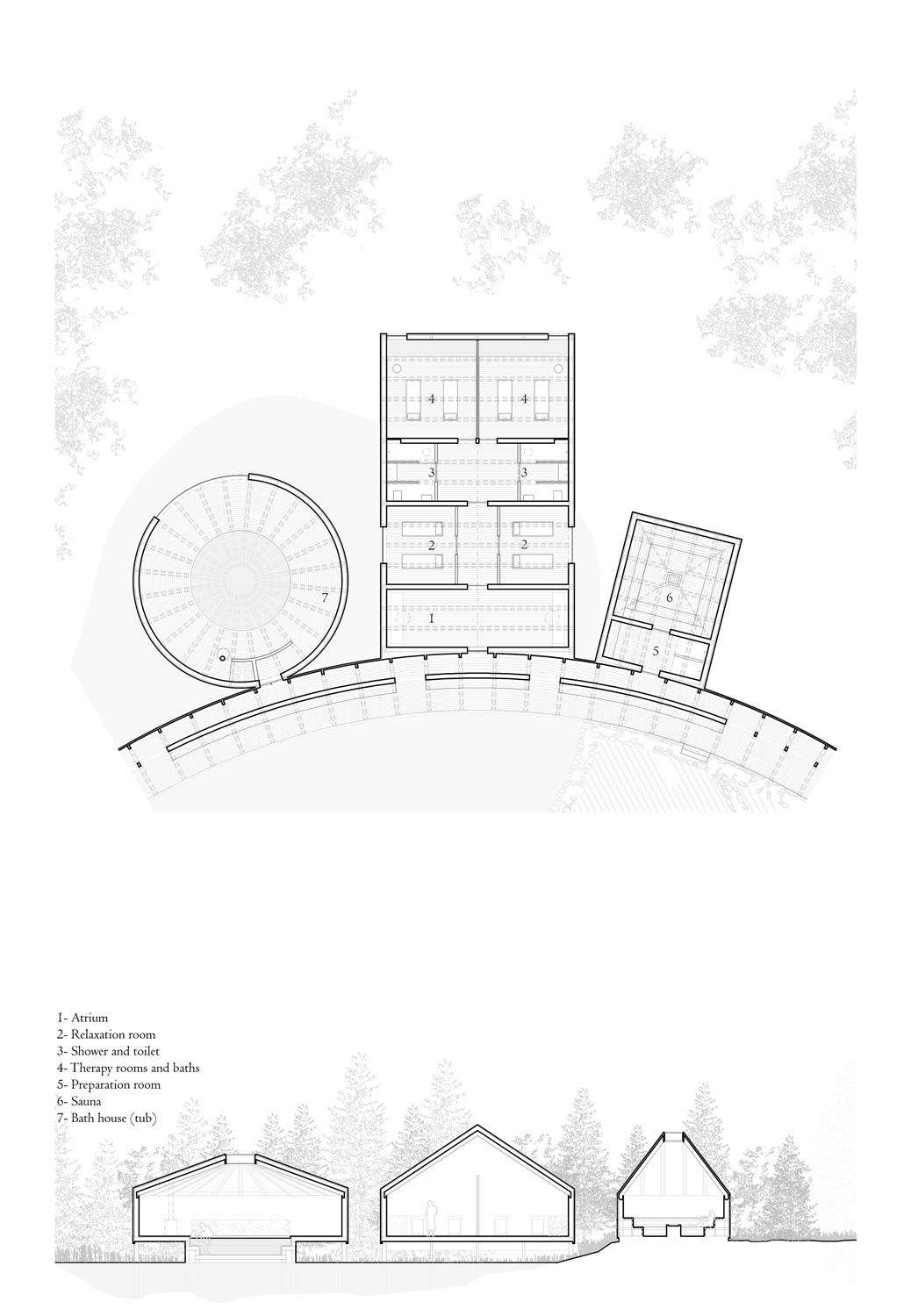1839-JVR-LV-2017
Client: Beebreeders
Status: Competition (2017)
Clasification: 1 prize
Location: Undefined
Coordinates: 56.606697, 21.088955
Climate: Continental, Temperate
Material: Wood
Environment: Forest
Visualizer: Studio
Scale: Medium
Types: Hotel, Residential
«Ecotourism results in environmentally responsible travel to natural areas, in order to enjoy and appreciate nature (and accompanying cultural features, both past and present) that promote conservation, have low impact and provide for beneficially active socio-economic involvement of local peoples.» – World Conservation Union (IUCN)
In Latvia, one of the greenest countries in the world, ecosystems remain where forests, swamps, lakes and rivers have developed at their own pace with minimal human interference and little exposure to the tourist unrest that is felt a bit all over Europe.
There are a number of initiatives that regularly promote sustainability, environmental awareness and respect for nature that surround the community, providing experiences in which nature and local traditions coexist in harmony, which also translates a very special way of life in which also translates into a very special way of life in which the tradition of building itself can translate these concepts.
For centuries, Baltic people built their own wooden houses with the resources that they collected in the nearby and abundant forests. These kind of houses were founded on ancient agrarian traditions where the dwelling and the barn were housed under the same roof, usually thatched, which generally received all the elements of a family.
The buildings of rectangular plan were divided in three parts, two thirds of it served the barn and the space where the animals lived, the remaining third, in one of the tops, was a large common space where the fireplace was lit daily. The fireplace, source of heat and light, kept the house comfortable in the cold season and served as kitchen facility. In the same space there were also two long benches covered with wooden planks that accompanied the walls of the house, usually an integral part of the structure of the building and served to sit, eat, work and sleep.
The houses contained no openings, or just very small windows, other than the doors and gaps at the two tops of the roof that allowed natural light to penetrate the interior, the smoke from the fire extinguished, and the humidity kept on the outside.
Although this type of construction is easily prone to fire and its use, linked to the lack of resources of its inhabitants, on the other hand its versatility makes it possible to receive modifications whenever necessary, especially expansions, and when they no longer serve the needs of the family, the materials can be reused for new constructions.
In an attempt to recover the memory of this community life, linked to the nature and cycle of the seasons, there are already several farmers who own old farms that offer Bed And Breakfast services and a variety of leisure activities to families of tourists who seek the tranquility of forest.
However Latvian natural resources are not depleted in the natural beauty of rural landscapes and the coast, in lakes and great green plains. The abundance of mineral resources recently used in restorative treatments that provide health and beauty benefits in their natural form, merited the attention of this contest and in this proposal, the union between the local building tradition allied to the healthcare provided by the blue clays – Blue Clay Country SPA.
Hortus Conclusus
In the vicinity of the village of Kapsēde, Kurzeme province in the western part of Latvia is the proposed site for the implementation of the proposal. It is generally a territory with small dispersed settlements, single-family farms, lakes and a vast dense areas of forest.
The site is characterized by the enormous clearing surrounded by a dense forest, a large lake to the south, and by the presence of some oaks that are used to generate dynamics on the building design, as well as the existence of the mineral clays in abundance which give meaning to the Spa. The easy access to the natural clays on the site implies an approximation of the proposed program to the territory. On the other hand, the preservation of the natural and landscape heritage implies a proposal that is not very incisive, which becomes the motto for the design of the proposal.
Through the creation of a covered gallery totally constructed in wood (taking advantage of the local raw materials) elevated of the land that makes possible the aggregation and distribution of the whole program integrally affecting in a reduced way the soils.living and dining area in order to promote activities linked to it. The complex, a «building-route» propitious beyond the observation and privileged contemplation of Nature throughout the intervention area some comfort in the transitions between spaces in the cold season and the prolonged stay in the hot season due to the creation of shaded spaces.
The memory of the clearing is maintained and its meaning is broadened with the integration of vegetable gardens, orchards and pastures that make the complex self-sufficient in terms of food resources. The inclined design of the roofs allows the collection of rains and increases the interior volume of the spaces, generating dynamic and comfortable spaces of quality also for its structure and materiality all in wood.
The route begins with the arrival to the North and by the contact with the first building of the complex the main house that through the gallery connects to the other spaces that integrate the complex: the guest house, the spa or the restaurant in a closed circuit in its interior and open to the surrounding outer forest timely. In areas where greater privacy is required such as the spa or guest-house, the only external relations are the outward facing of the complex and in the zones of the program in which one appeals to community life where there is a more frank relationship between the interior and exterior as is the case of the lake-relatedliving and dining area in order to promote activities linked to it.
Spa – therapy area
The Spa is composed of three buildings with different programs, spatialities, shapes and dynamics.
The sauna, with a quadrangular plan, contains in itself a modest space, with a wooden bench divided in two levels all around. The space is overheated through the stones on the center of the pavement. Aligned vertically with these stones is a quadrangular light «chimney» that naturally light the space.
The relaxation zone presents a succession of spaces. We highlight the massage and treatment rooms with natural clays where the visual contact directed to the water of the existing lake is favored through a gap near the pavement where people look while lying down on the bath. At the top of the volume are two comfortable relaxation rooms, where people can enjoy the view between the lake and the forest or doze off after the treatments.
Finally, in the circular space the zone of hot baths is drawn. This has a round bathtub «dug» in the center of the space, crowned with two spans that continuously change the perception of space throughout the day and the seasons; One of the windows is horizontal to look at nature; The other is circular and is centered on the ceiling which provides a different ambience than the remaining spaces.
Guest house
The guest-house space attempts to recreate the ambience of the Latvian single-family house with sequential spaces organized from the entrance, from the most common – the living room – to the more intimate – the rooms. The room frames the top of the forest through a circular span while the rooms offer a full view of the trees to give people the feeling that they are sleeping in a small forest shelter. Between the bedrooms and the living room is the bathroom and a small closet.
The main purpose of this house is to be used by the family in a carefree way, as if it were your home from day to day, housing the varied activities of a family during vacation. The whole house heats through a salamander situated in the living room. The guest house presented can be replicated by the owners of the complex, as many times as necessary, if tourist demand justifies it.
